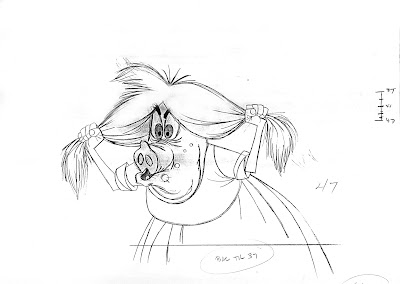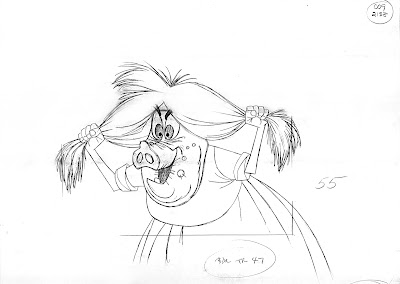This Disney movie turned 70 years old, a couple of days ago.
As you probably know there are two movies in one, two different stories combined into a feature length package.
Bongo, the story of a little circus bear, and the other Mickey and the Beanstalk.
For a previous post on Bongo go here:
http://andreasdeja.blogspot.com/2016/03/bongo.html
I remember seeing Mickey and the Beanstalk as a kid, and loving it. I still do.
Production on the film was difficult. First the story had been conceived as a full length feature film, but was later reduced to just under half an hour. Then because of WW II the movie was put on hold because propaganda films for the US government took priority.
Fun and Fancy Free wasn't released until September of 1947. I love it's colorful art direction, the story treatment and the animation. (Although it is not on the level of earlier Mickey shorts such as The Brave Little Taylor.) The idea of little characters entering an oversized Giant's world is beautifully presented with stunning layouts and backgrounds, extreme up and down shots are all over the film.
On this anniversary I recommend re-watching the movie, I think you will enjoy it once you get over the poorly written live action sections.




















































